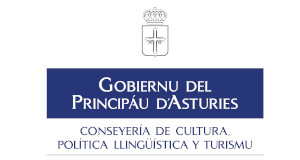Religion





There are three principal sources of information which allow
us to draw near to the populace of Asturies in the Iron Age: literary mentions
from writers in Greek or Latin; epi-graphic evidence, and in some cases,
iconographic evidence. Strabo, the Greek geographer, mentions a cult to
a nameless divinity venerated by all-night dances at the doors of the wors-hippers'
houses on moonlit nights. Nowadays, some writers draw our at- tention to
the importance of a cult to the Roman Jupiter in Asturies and Galicia(more
than seventy percent of the inscriptions appear in the Celtic Hispania),
perhaps because Jupiter's universal character allowed him to personify the
nameless gods of the indiginous population.
Today, however, thanks to epigraphs, we do have various contemporary place-names
which are deri-ved from the gods of the time: Evedutoniu Barciaecu, Reus
Pecius Paramecus, lupiter Candamius, and the very interesting Nimmedus Seddiagus,
the first name of which, Nimmedus, has been connected to the Celtic word
Nemeton (open air sanctuary); and even more abundant names which have survived
in toponomy to the present day (Deva, Navia, Taranis, Taranes, Taraniellu,
Taranilla, Tdrafiu),who together with Esus and Teutatis forms the fundamental
divine triad venerated by the Celts, Belerms (Belefio), Vindormus (Benduefiu,
Lena), etc.
We can also appreciate the importance of astral symbolism in the iconography
which has survived, in waxing moons, stars and discs, spoked swastikas or
swastikas formed from horses, all of which direct our thoughts to "the
final journey".









